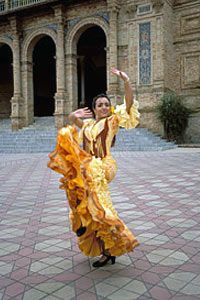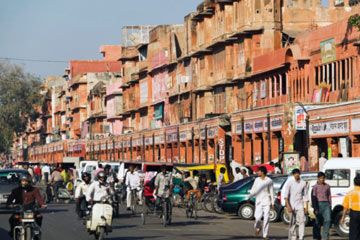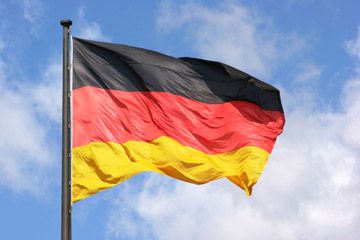Traditional Spanish Clothes
Today, many people consider France the center of the fashion universe, but in the 16th century that distinction went to Spain. At the time, Spanish clothiers stitched together rather sober designs making use of the period's heavy fabrics. They then decorated their work with gold and silver thread, bejeweling the fabric with pearls and other gems, an influence left behind by the Moors.
As was the fashion of the time, well-dressed women often wore hoop skirts known as Farthingales. Men wore their hair short, although they donned beards. Black, red and gold were popular colors for both sexes. Women also dressed in a fan-shaped wired collar called a wisk, while men donned a copotain, a high, inverted bell-shaped hat. Most males of means wore loose breeches called Venetians [source: Central Washington University].
Advertisement
Yet, for all its flamboyant rigidness, the Spanish style of dress became outdated, and the capital of style shifted from Spain to Paris. Still, when you think of Spanish fashion, copotains and wired collars do not come quickly to mind. Instead most people are familiar with the Andalusian-style of dress, which many outsiders consider the Spanish national costume [source: Worth].
Today, most people refer to Andalusian dress as flamenco. Such traditional clothing is still popular. And according to Marbella Guide and Spain Traditions, people continue to wear such traditional clothing, including the following:
- Mantilla -- a long lace or silk veil that women wear over their heads and shoulders. The mantilla is the Spanish equivalent of the veil worn by Moorish women. The mantilla was made popular because women could not enter a Catholic church without covering their heads.
- Peineta -- a tortoise-shell comb used to hold the mantilla. Although popular in the 19th century, Spanish and Latin women still wear the peineta during special occasions such as weddings and religious ceremonies.
- Traje corto -- short jackets with high waistbands worn with a white shirt by males. Many times the waistband is colored. Men often wear the traje corto with the sombrero de alanche, a wide-brimmed hat.



